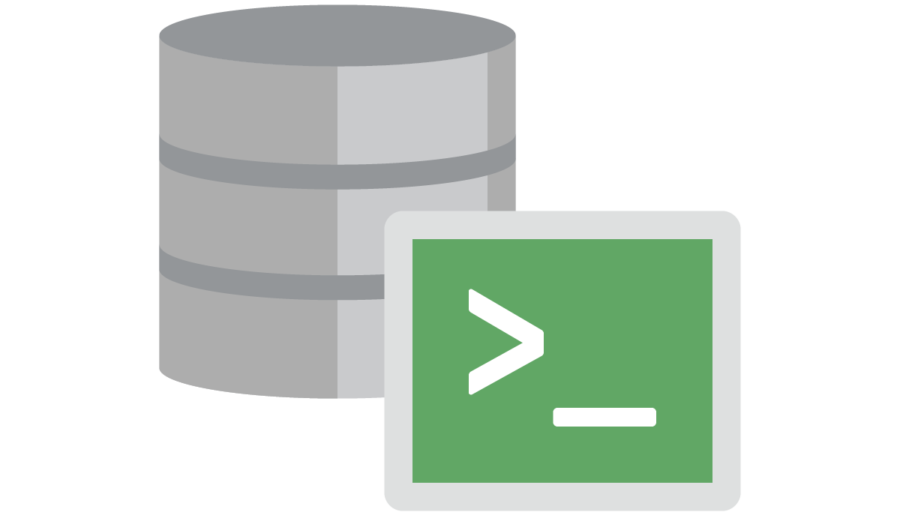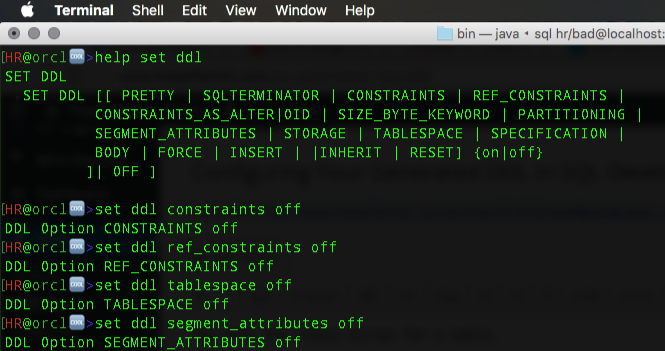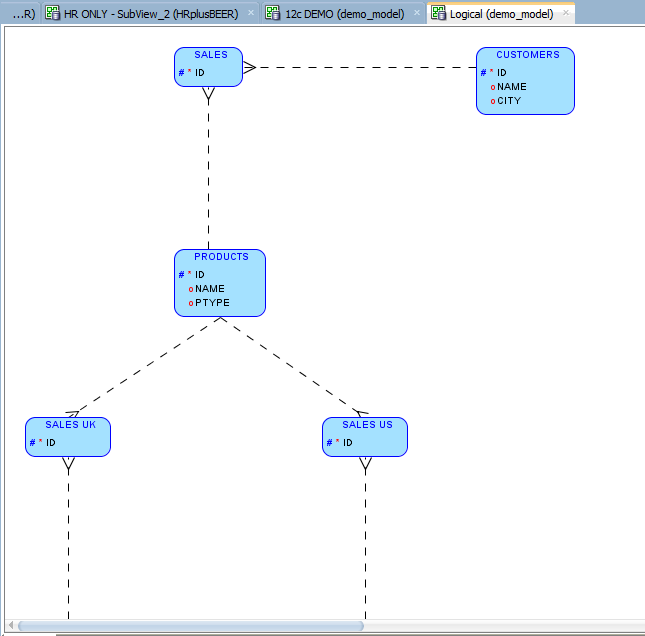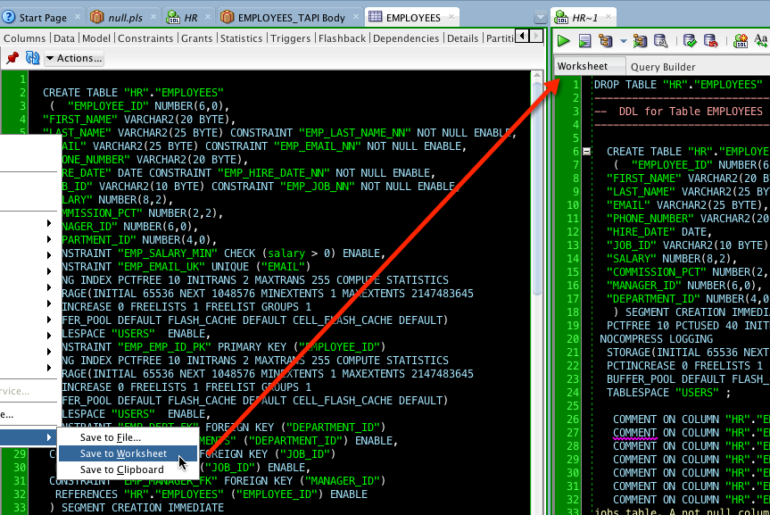Hopefully you’ve heard about the new SQL*Plus we’re building. And hopefully you’ve heard about the new REPEAT command we put into it yesterday. Here’s a quick example of how to build a little ‘monitor’ in just 2 commands, a total of 5 lines of code. The SQL 18490929456875976c46a21_000000 So run that, make sure you like the formatting, and the data of course 🙂 Then to turn that into a refreshing report, run this: SQL>repeat 100…
I was going to talk about our new IMPORT command in SQLcl. This will allow you to feed a delimited text file of data to our command line interface and have it automatically imported to a table. But Kris Rice beat me to it. Woo-hoo, less work for me 🙂 So go read that now. If you read far enough, you’ll see a really cool video on how to create a session monitor in SQLcl.…
Question: How can I make SQL Developer display the number of rows returned by a query? Answer: Execute the query, and fetch all the rows. But I’m not seeing it! and fetch all the rows. This part is important. Execution using ctrl+enter executes statement, and returns the FIRST ‘fetch’, by default of 50 records. First Fetch Last Fetch Warning: Rant ahead! …Until All Rows Are Read – there’s one or more proceses on the server…
Everyone likes pictures. Generate a report without any pictures, graphs, or charts and see how many ‘likes’ you get at work. Everyone gets excited about data modeling, and in some circles, folks think that data models are synonymous with diagrams. But really, the diagram is just the ‘pretty picture’ you add to your office report. Don’t get me wrong, these pictures CAN be very important. There are lots of things you can do to customize…
As we get nearer to releasing our next update for Oracle SQL Developer, there are a few FAQ’s I’d like to answer. When IS version 4.1 going to be available? Soon. Right NOW, actually. Will there be a Windows download available that includes a JDK? Not today, but there will be a 64-bit bundle available soon. Why are you making us run Java 8? Because Java 6 and 7 are old, and Java 8 is…
I recently talked about how to load up your Oracle Cloud service with your local data. In that scenario, you’re in the graphical user interface, clicking buttons, doing things more ad-hoc. But what if you wanted to build an automated process to load up data from an on-premise Oracle Database? You won’t have a GUI available then, so what’s available? Enter the SQL Developer command-line interface, also known as SDCLI. In the SQLDEVELOPER/BIN Directory Here…
Is there a way for SQL Developer to generate a DROP statement when exporting the DDL for a table? Yes. The drop preference will be applied when generating the DDL for scripting purposes, but not for the table editor. So to get the table CREATE DDL script with a DROP TABLE command, right-click on your table, and send the ‘Quick DDL’ to a worksheet, clipboard, or file. There’s also a ‘Cascade Drops’ preference, which is…
Reports are one of my favorite features. If you don’t use them in SQL Developer, please read this. The user interface for user defined reports is very simple in SQL Developer. Maybe even, too simple? Sometimes I tell folks to save and/or copy their reports around. And it’s not exactly apparent how to do this at first glance. Of course, once you’ve done it once, it’s very obvious. As a product manager, sometimes it’s easy…
You may wish to store your PL/SQL code in files with file extensions other than our defaults. We ship with .klr, .pkb, .pkh, .pks, .plb, .pls as associated file types for our PL/SQL editor and for opening said files on your machine with SQL Developer. But maybe at XYZ Incorporated, you keep your package bodies in files of type .bdy Are you stuck using our SQL Worksheet for doing serious PL/SQL work? No! Just setup…
A few weeks ago I published a story highlighting all of the different ways SQL Developer can help you with your code. That post generated a lively discussion around this: Pre Version 4.1 Let’s try that again: Version 4.1 Early Adopter 2, specifically We’re also making sure to sort the local schema objects ALWAYS to the top of the pick list. P.S. Wondering why that last screenshot has a funny worksheet name? You can change…







